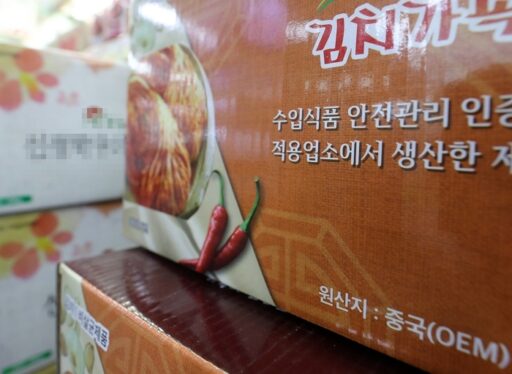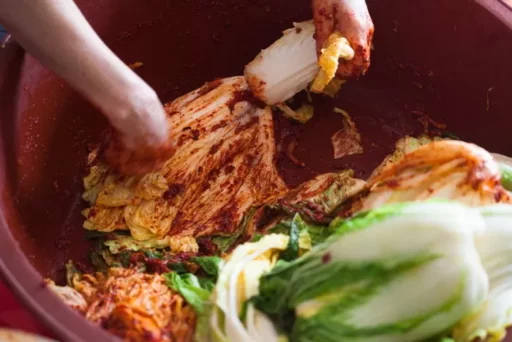China's Kimchi Imports Surge, Domestic Kimchi Industry Faces Crisis
As the prices of kimchi and napa cabbage soar in South Korea, kimchi imports from China have reached an all-time high by May of this year.
It is analyzed that the number of consumers and small business owners seeking cheap Chinese kimchi has significantly increased.

According to the Customs Service's trade statistics published on the 24th, a total of 137,783 tons of kimchi were imported from January to May this year, which is a 9.7% increase compared to the same period last year. The total import value also rose by 11.7%, reaching $79.883 million. This marks the largest scale since the relevant statistics began compiling in 2007 for the January to May period. If this current trend continues, the annual kimchi import volume is likely to set a new record.
The primary reason for the increase in demand for Chinese kimchi is attributed to rising prices.
Industry experts cite rising raw material costs due to domestic inflation as the main cause of this phenomenon. In particular, there are increasing cases in the food service industry where businesses are switching to Chinese kimchi to cut costs.
Yoon Young-chae, secretary general of the Korean Kimchi Association, explained, “Restaurants that used domestic kimchi for side dishes and Chinese kimchi for stews are increasingly replacing even side dish kimchi with Chinese products due to cost pressures.”

According to the Consumer Price Index published by Statistics Korea, the kimchi price inflation rate recorded a 13.2% increase compared to the previous year last month. This number is seven times higher than the overall consumer price inflation rate of 1.9%.
Notably, kimchi prices have maintained a double-digit inflation rate for seven consecutive months since November of last year. The fundamental cause of this price increase in kimchi stems from the soaring prices of the main ingredient, napa cabbage.
Napa cabbage prices have seen a significant increase of 16% to 67% compared to the previous year from September of last year to April of this year. Issues such as abnormal weather conditions, heavy snowfall, and cold waves negatively affecting growth conditions, along with supply instability, have been identified as the primary causes.
Price differences between Chinese and domestic kimchi exceed 60%.
Comparing prices at food ingredient marts frequently used by small business owners shows clear price disparities between Chinese and domestic kimchi.
At F Food Mart, the online selling price for Chinese kimchi is as low as 13,800 won per 10 kg, while domestic kimchi costs 40,500 won.
At A Food Mart, Chinese kimchi is sold for 14,200 won per 10 kg, while domestic variants cost 35,800 won. This means choosing Chinese kimchi could save costs by 60-65%.

Another factor contributing to the increase in demand for Chinese kimchi is the strengthened hygiene and safety management applicable to imported kimchi since October 2021 under the Food Safety Management Certification (HACCP) standards.
Experts predict that due to domestic inflation and overall economic stagnation, imports of Chinese kimchi will continue to rise in the future.
Yoon Young-chae of the Korean Kimchi Association emphasized, “It is a major concern for the industry that not only kimchi manufacturers but also domestic napa cabbage and related agricultural sectors could be negatively impacted, jeopardizing the industrial foundation in a cascading manner.”
In response, a Ministry of Agriculture, Food, and Rural Affairs official stated, “We will support small businesses with storage facilities and some costs, and focus on managing the supply of summer napa cabbage.”
Image source: Reference photos for understanding the article / News1, Reference photos for understanding the article / gettyimagesbank

![[Breaking News] Special Investigation on Rebellion “Yoon Seok-yeol Refuses to Enter Investigation Room… Attempted to Resume Afternoon Investigation but Raised Issues”](https://wordkorean.com/wp-content/uploads/2025/06/thumbnail-858.webp)
